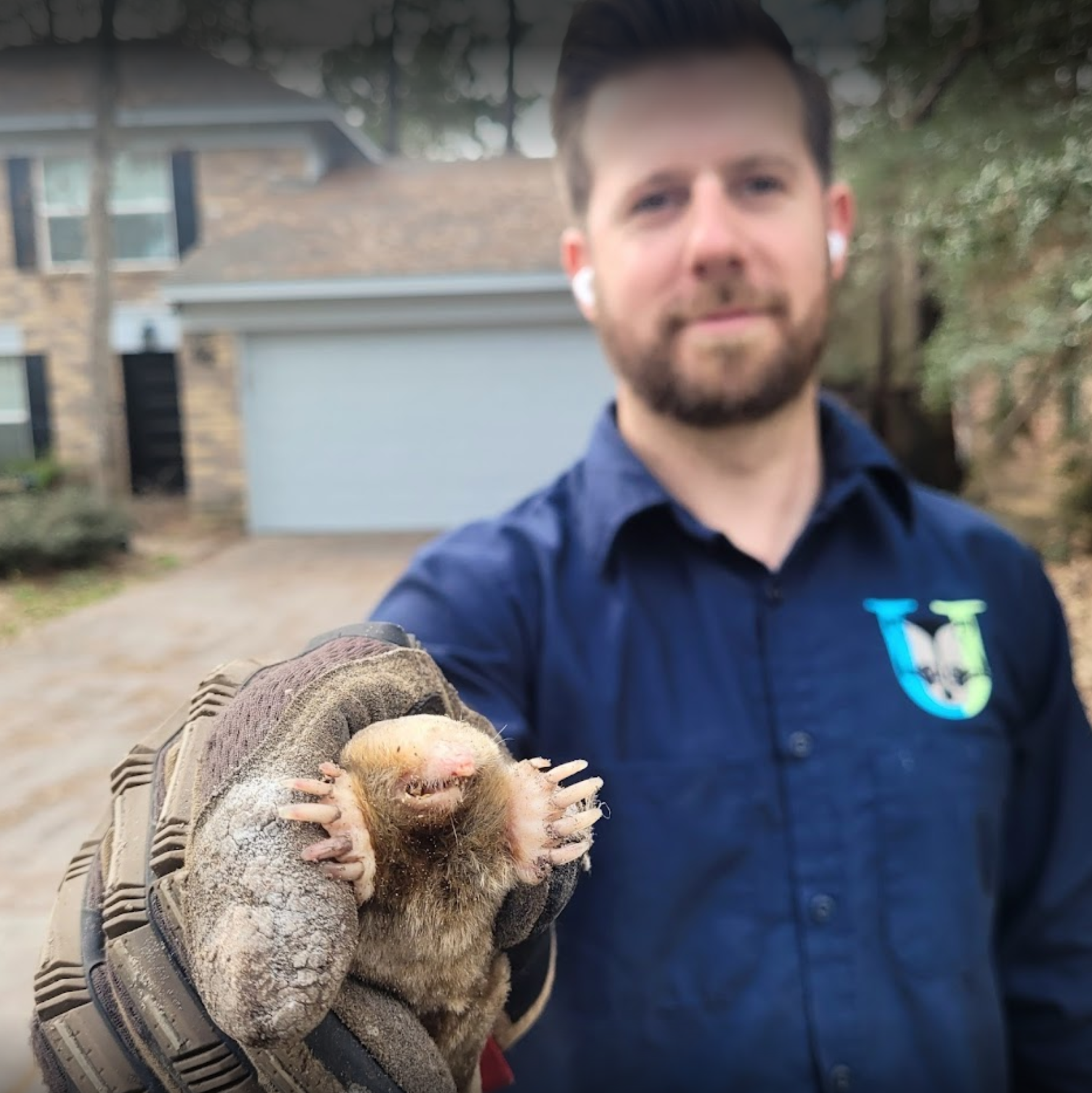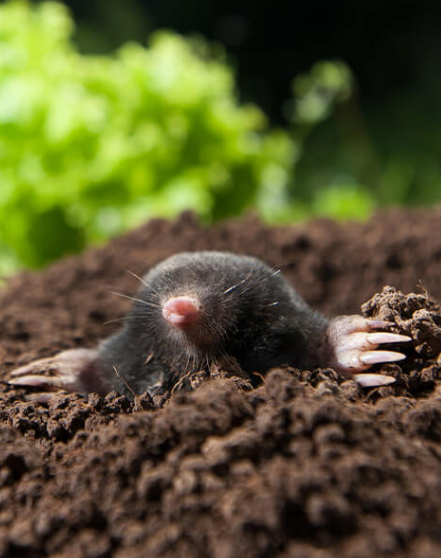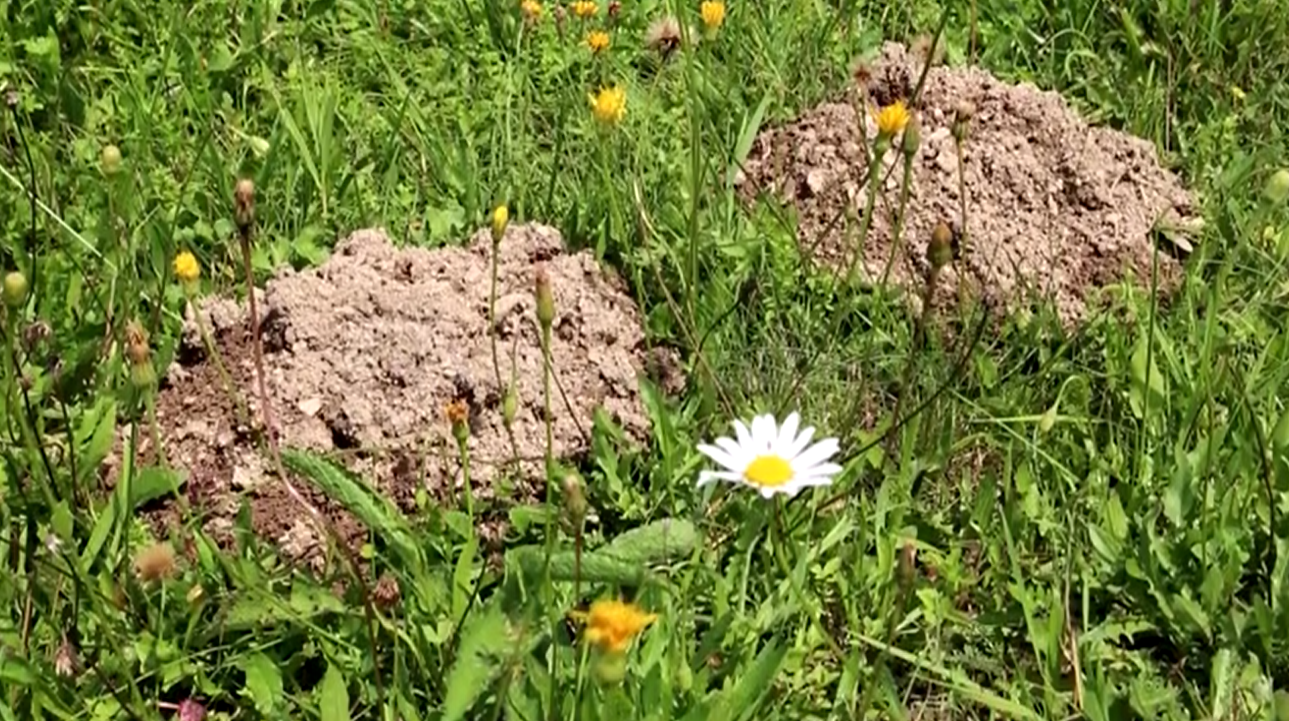If you’ve noticed mounds of dirt piled up in your yard, you may have moles. Moles are known for digging tunnels, which create volcano-shaped mounds and destruction in residential or commercial properties.
Don’t let a mole infestation ruin your landscaping. At Urban Jungle Wildlife Removal, we offer the services you need to prevent these animals from damaging your property.

What Do Moles Look Like?
Eastern moles, the most common mole to invade yards, are mammals with small, cylindrical bodies. They are usually anywhere from 6 to 8 inches long and have soft, gray or brown fur.
They are a common burrowing animal found in many areas throughout the United States. Because they spend much of their time living underground and digging, they have paddle-like forefeet and long claws to help them make their way through the soil. Their forepaws are unique because they have a prepollex, or an extra thumb.
Moles also have pointed snouts and tiny eyes and ears, which help protect them underground.

What Do Moles Eat In Your Yard?
Moles are considered omnivores, which means their diet consists of animal and plant matter. However, it is uncommon for them to eat garden plants or vegetables.
Instead, moles mainly feed on earthworms and small invertebrates found in the soil. Their saliva contains a toxin used to paralyze earthworms. With this substance, moles can also store earthworms to eat later on.
Typical Mole Behavior
If you have moles in your yard, you may not actually see them. Moles spend most of their lives underground. Their bodies are designed to survive in low-oxygen environments, and they can reuse exhaled air underground, allowing them to stay below the surface for long periods.
Moles are solitary creatures. Usually, male and female moles will only come together to mate. Between February and May, male moles will begin expanding their tunnels to find a female mate. If males come across each other during this time, they may fight.
Signs of Moles in Your Yard
Since you probably won’t see these little underground creatures scurrying around in your yard, it can be challenging to know whether you’re dealing with a mole infestation. The most obvious signs are the mounds and runaways that will form in your yard from building tunnels. the runaway and tunnels can sometimes cause damage to the grasses roots causing the grass to yellow. Another less obvious sign, is that the ground may feel spongy as your walk around.
Moles will use the longer straighter tunnels between mounds for long-term access to a food source, while other runaways branching off of main tunnels are essentially side tunnels without any open holes used for exploration of potential new food sources. The mounds will appear as volcano-shaped piles of soil, and the runways will look more like ridges on the surface of your lawn.
Keep Your Yard Protected With Urban Jungle
If you have moles wreaking havoc in your yard, the team at Urban Jungle Wildlife Removal is here to help. Our wildlife removal specialists are highly trained and experienced in removing all kinds of wildlife and pests. We offer recurring preventive services to ensure these little mammals leave — and stay away from — your property.
We’ll customize our services to meet your specific needs and situation. Interested in learning more about our mole removal services? Contact us today to get started.

